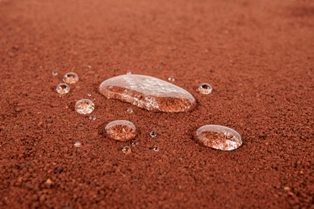As I write this, the collegiate baseball/softball season is underway and pitchers and catchers have reported to spring training. Recently, while managing the production plant for Stabilizer Solutions, Inc., an urgent order came across my production board written in all caps, SURPRISE SPORTS COMPLEX- HILLTOPPER WARNING TRACK. Surprise had already received their typical infield mix order much earlier in the winter, and the Pac-12/Big-10 Challenge Tournament was quickly approaching. They wanted their regular warning track to be “waterless” just in time for games to start.
Background
In the 80’s our company conducted research with the Massachusetts Institute of Technology (MIT) focused on moisture and soil interaction. The key breakthrough: no matter the structural composition of a surface, the mechanical properties will change across moisture contents. For ideal mechanical performance, the athlete needed between 4-12% moisture content, or a damp soil consistency. This was related to running track research proving proper firmness increased running speeds and reduced injury potential.
The research results showed that Stabilizer infield amendment helped maintain the mechanical properties of soil across varying moisture contents, thus “stabilizing” the soil. This was good news for groundskeepers who could till Stabilizer into their existing infields. We began engineering infield mixes with specific particle distributions; pre-blended with Stabilizer. Stabilized Infield Mix installations now include the American Softball Association Hall of Fame Stadium, TD Ameritrade Park, other collegiate and professional fields, and most Cactus League spring training complexes, including Surprise Sports Complex.
Evolution of waterless
On a professional field like Surprise, the warning track takes most of the abuse and receives very little of the water. Removing water altogether seemed like a natural progression. Building upon our moisture research and soil engineering experience, we developed a process that coated soil particles with a waterless polymer coating. The numbers are compelling. Arizona Diamondbacks’ Grant Trenbeath calculated Hilltopper Warning Track saved 500 man hours a year. Our own calculations show him saving 200,000 gallons of water annually. Current users include the Angels, Diamondbacks, Yankees, and Astros. We’ve also seen rapid adoption in college softball infields as the Hilltopper does not freeze.
Usually installation is a much longer process. In this case, there wasn’t even enough time to excavate the existing warning track. Going over the top of the existing track was the ideal short term fix. The process began by removing ¼ inch of warning track using a box blade and grading the track towards the outside wall. Next we dripped polymer onto the track, worked it in with a nail attachment, and later soaked the track with water. We then topdressed with 65 tons of Hilltopper Warning Track Mix and mat dragged. Next we used our spike drum tool to relieve compaction from vehicles and completed a final mat drag.
The unorthodox process helped achieve a “waterless” warning track in just 3 days. Korean League teams training at Surprise have already used the stadium field for practice games. The warning track is performing without water and most importantly, there isn’t any dust, but that’s not really a surprise.-Clay Hubbs, director of operations, Stabilizer Solutions, Inc., Phoenix


